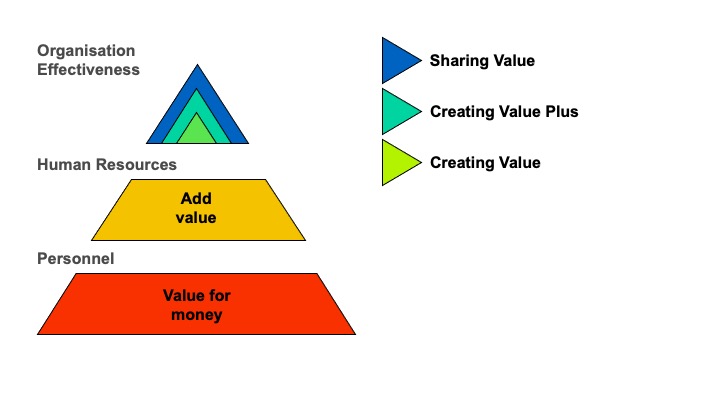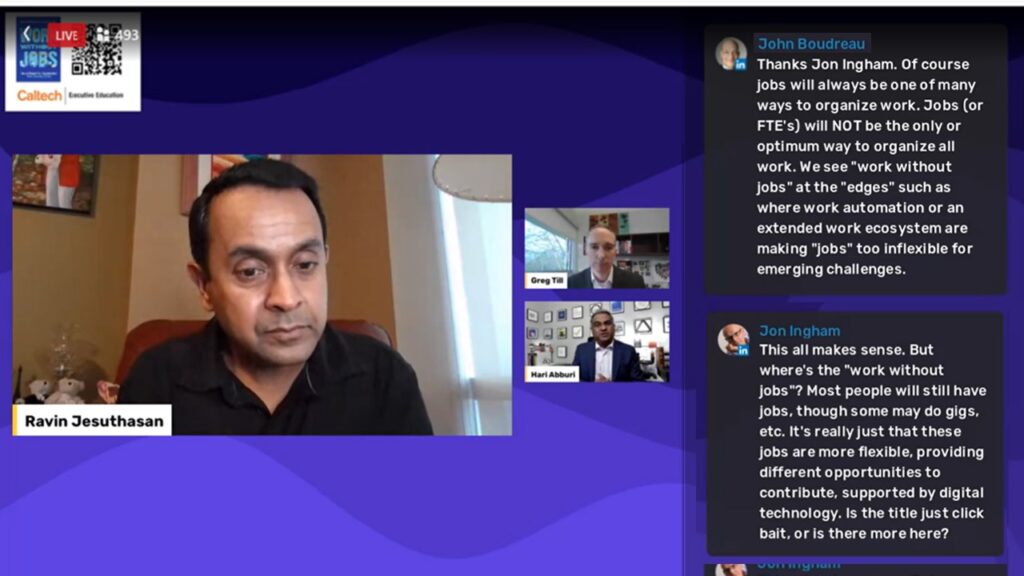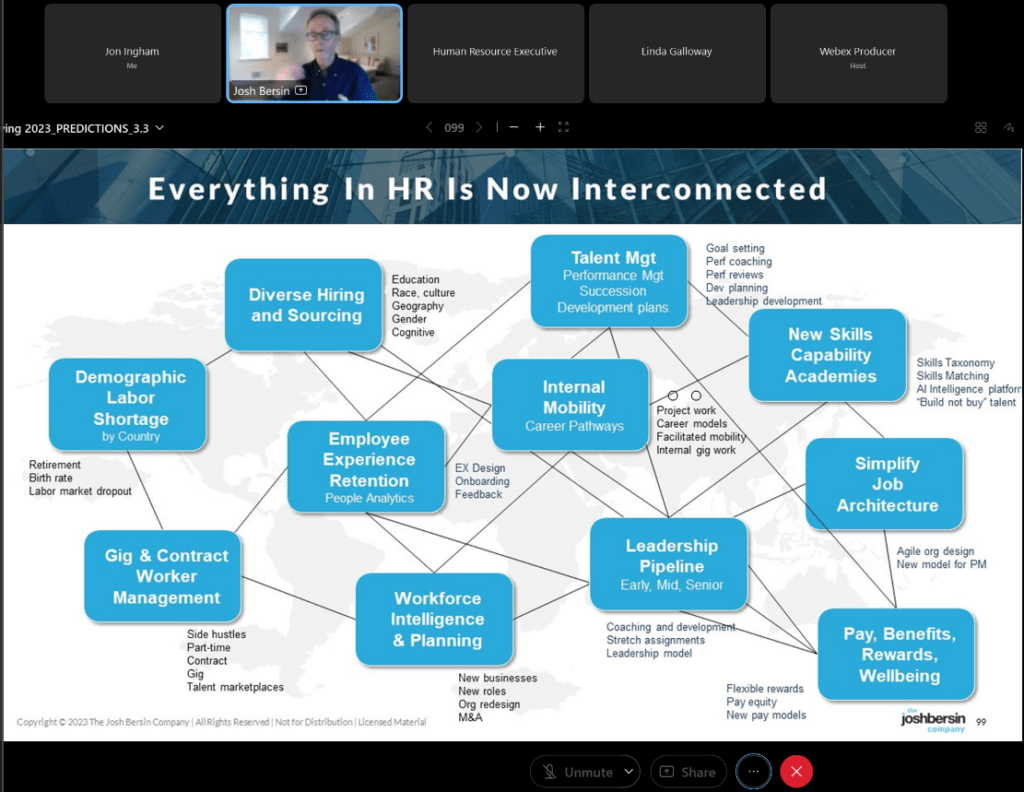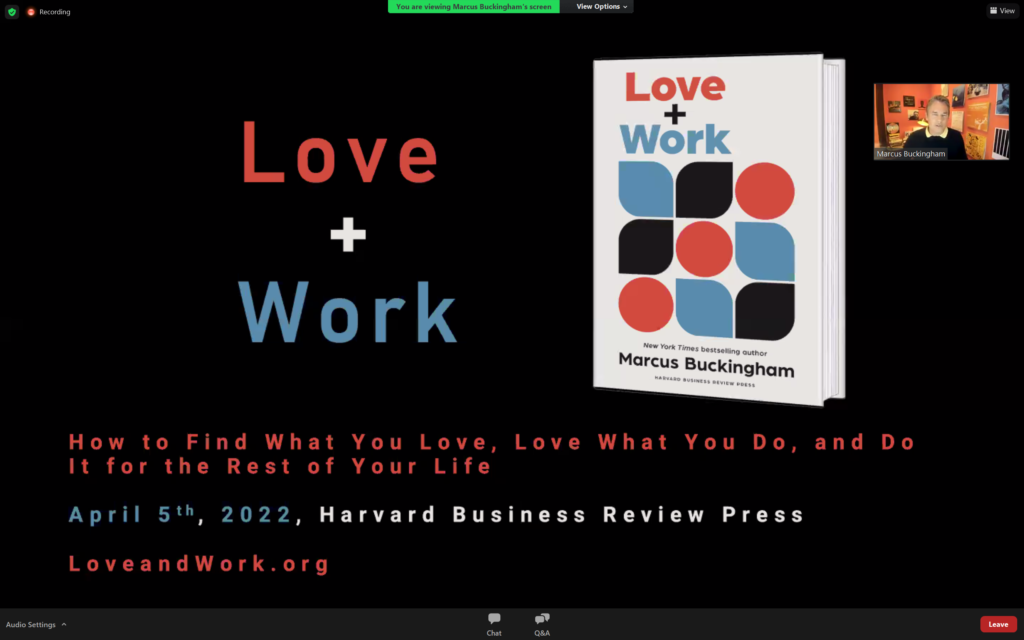Beyond Just Strategic: People-Centric HR

I’d been blogging at Strategic HCM for thirteen years before taking a bit of a break and then starting to post here. That’s partly as I’d been so busy during the pandemic, moving my training onto Zoom, and then into the Academy, that I’d not been having any time to post. But it’s also because, now nearly fifteen years on, my ideas have changed or at least, developed, somewhat.
Creating Value
Although I guess most people will naturally associate my previous blog with HCM, this isn’t really what it was about. After all, I’d been posting probably just as much about the opportunities for creating organisation and social capital (even before ‘The Social Organization‘) as I had been managing people to create human capital (and I’ve never, ever suggested that people ARE human capital!).
So the key focus of that other blog was actually very much the opportunity for HR to Create Value. This idea goes back even further than the blog, to my first book, also called Strategic HCM, and my previous consultancy work at Penna, and a model called the Value Triangle.

A very high level summary of that model is that HR can provide value in three ways – Value for Money, or efficiency; Added Value, or effectiveness, by supporting the rest of the business more closely or proactively; and Creating Value, or being truly strategic, by enhancing the value of people meaning that the business can achieve even more. I also call this people based business strategy.
If you want to find out more about people based business strategy, have a look at the Academy’s Competitive Advantage through Organisation Capabilities course.
Creating Value Plus
However, I’ve also realised that whilst most HR organisations have still to move up to created value, this doesn’t go far enough. Yes, it’s focused on putting people at the centre of business, but it’s very much the organisation, or HR, doing the putting. People have become so important, meeting their expectations so critical, and our organisations so complex, that we now need to create strategic opportunities with them rather than doing this for them. And on their terms, rather than our own. So that rather than planning how to create value from people, we create an organisation that allows people to create value for themselves.
This isn’t a particularly new idea, for me, or for many other people. But I am finding that I’m talking about it more now, and have recently started using a metaphor of a mirror for this, suggesting that as we look at the organisation value chain in the mirror it reflects back a sort of value chain in individuals too. And that positive developments for each individual in their own value chain will reflect back benefits for the business as well. (This compares to my previous metaphor for the link between the organisation and business value chains being a window, allowing a two-way exchange between these – adding and creating value.)
I’ve increasingly referred to this new way of thinking as ‘Creating Value Plus’. Or you might see it as shifting from being people centred (the sub-title of my Strategic HCM blog) to being truly people-centric.

I think this is also similar to Humanocracy’s call to maximise contribution for the sake of collective impact:

This is how I describe the shift to people-centricity in ‘The Social Organization’:

One consequence of this shift in thinking is that when I’ve been designing organisation architectures or HR processes, I’ve broadened out the objectives I use for their development from just focusing on organisation capabilities and principles to also incorporate employee expectations, so that we’re designing for our people at the same time and in the same way as we’re designing for the business. (Rather than just putting lipstick on a pig by designing business focused HR processes or other organisational elements, and then trying to dress up the employee experience.)
All of the courses in the Academy, other really than Competitive Advantage, which has got enough to cover just as it is, take this creating value plus approach to HR and OD. However, I’ve been wondering for some time about whether even this is enough.
I think most of the discussion on employee experience is nonsense, because whilst experience is absolutely important, experience itself isn’t the main thing, it’s the organisation’s perspective on its people that’s even more important (ie moving from people centred to truly people centric).
And actually, most of the rest of the discussion is still only ever half sense. Experience is important, because people are important, but we still need to develop value or capability (human, organisation and social capital) for the business too. This is similar to the need in the rest of the business to provide a good customer experience, but to provide a financial return based upon this experience too. This relates to the common finding of many start-ups, that developing an app which provides a compelling experience is one thing. Getting customers to pay for it is quite another, but no business is going to get far unless they manage to do this.
HR teams which only focus on experience and forget about value / capability are going to help put their businesses out of business fairly fast.
However, there’s something in the employee experience world that I’ve been missing and I wanted to put at the centre of a new stream of programmes in the Academy on People Centric HR, which will include courses on Putting People First, Employee Experience, and Wellbeing.
So I’ve been wondering whether the main opportunity for this, and moving beyond Creating Value Plus, is to smash, or at least limit the dimensions of the the mirror I referred to above and see the employee and organisation value chains as less connected than I tend to do.
Shared Value
This weekend I’ve been reading some of Dart Lindsley’s thoughts on Work for Humans, where he suggests that workers are both employees and customers in a multi-sided model, and I think that captures nicely where my own thinking has been heading.
I haven’t got a good name for this approach as yet, but I’m thinking about Michael Porter’s term Shared Value. Because, for me at least, the value does need to be shared. It needs to be value for the employee, but the business needs to believe it will receive a return of value from doing this, even if it can’t be identified in the way of Creating Value Plus. (Almost in the same way as a bank provides value to both lender and borrower, or one of the tech giants provides value for user and advertiser.)
The above thoughts suggest there may be another two or three opportunities for HR beyond even Creating Value which are Creating Value Plus; Shared Value; and perhaps also, Value for Employees, where a business does not expect a return of value at all.

Developing my windows and mirrors metaphors, Value for Money is about a wall between HR and the business and we don’t know and don’t care what’s on the other side of this (and vice versa). Added Value is a one way mirror where we can see into the business but they don’t know and don’t care about what’s possible in HR. Created Value is a two way window between HR and the business.
Created Value Plus is a mirror reflecting the organisation value chain and how the individual is accumulating value for themselves. Shared Value limits this mirror to organisational activities, but with dark, frosted or obscure glass between the the outcomes achieved by the organisation and the individual (so the business gets some benefits but can’t really see what these are). Employee Value would be a wall between the outcomes in these value chains.
Given that the last of these opportunities isn’t actually likely to be seen as much of an opportunity by many businesses, it might be enough to consider the two additional opportunities to build on Creating Value, ie Creating Value Plus and Shared Value:

These new opportunities build on Creating Value for two main reasons. Firstly, the organisation still needs to create the environment (organisation or culture) where people can take the steps they need to take themselves. And secondly, both Creating Value Plus and Shared Value are in themselves both ways of creating value too.
If you’re interested in these opportunities moving beyond truly strategic HR, please see the Academy’s programmes on People Centric HR, including: on Putting People First, Employee Experience, and Wellbeing.
Jon Ingham
HR Strategist, Trainer and Learning Facilitator at the Jon Ingham Strategic HR Academy





